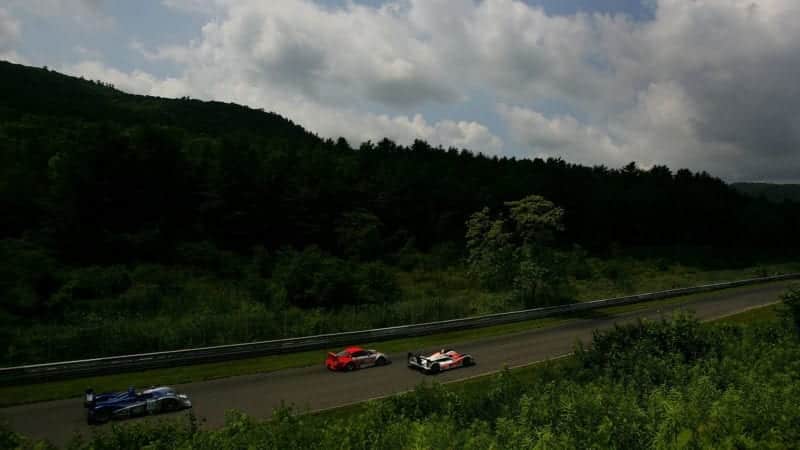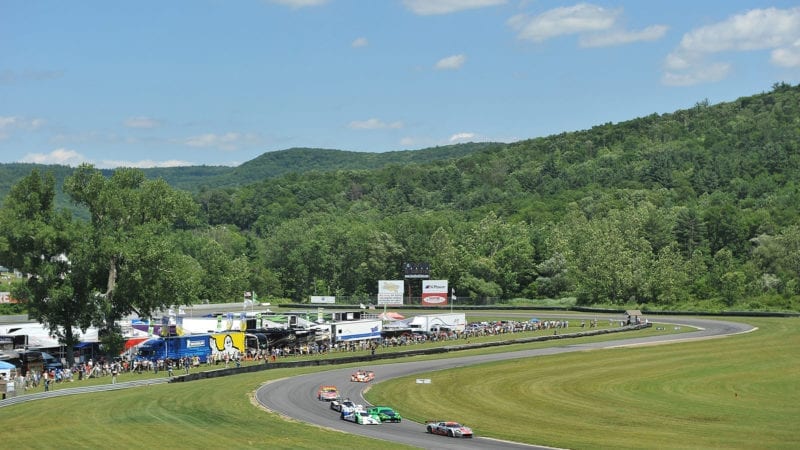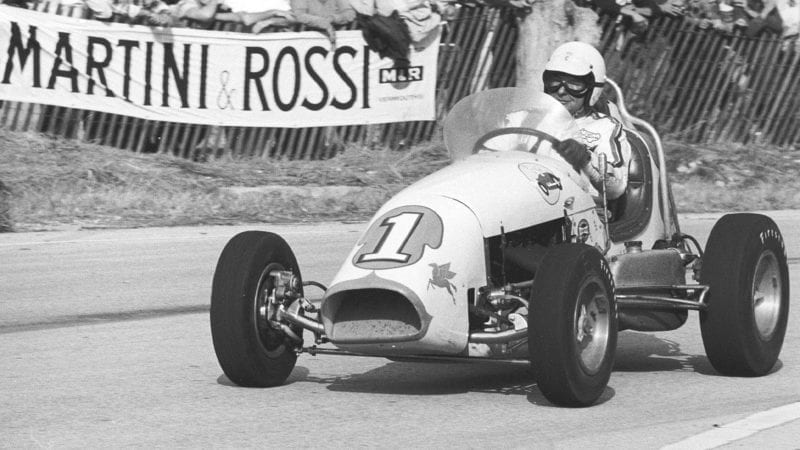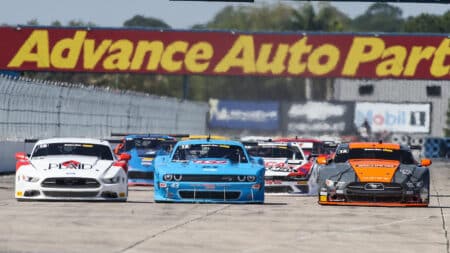Probably the most famous race in track history – and certainly its weirdest – was the Formula Libre mashup staged in 1959. The favorites included an ex-Fangio Maserati 250F driven by Chuck Daigh, George Constantine in an Aston Martin DBR2, a Maserati 300S for Pedro Rodriguez, and Dick Thompson, the racing dentist, in Bill Mitchell’s one-off Stingray. But the unlikely class of the field turned out to be reigning Indy 500 champ Rodger Ward in a Kurtis-Kraft circle-track midget equipped with drum brakes and a single-speed gearbox.
Ward stunned the sporty-car set by qualifying on the pole, then finished second in the first heat and won the second. In the 60-lap main event, Ward dirt-tracked around the outside of Constantine and Daigh in one fell swoop, survived an off-course excursion and won going away. The victory inspired Ward to enter another midget in the inaugural U.S. Grand Prix at Sebring at the end of the year. But there, alas, he qualified a painful 43.8 seconds behind Stirling Moss’s Formula 1 Cooper-Climax, which closed the book on the Kurtis-Kraft road-racing adventure.
From a professional racing perspective, Lime Rock’s glory years coincided with the heyday of the GTP era. There was a traditional Memorial Day weekend event, with qualifying on Saturday and races on Monday. The lap speed inched up to nearly 123 miles per hour (Martin Brundle in a Jaguar XJR-9) until disaster struck in 1988, when John Morton’s Nissan flew up and over a rise in the back straight, landing on its roof and bursting into flames.

Lime Rock Park represents a “drive through a country lane”, in contrast to some of the more modern ‘Tilke-dromes’
Darrell Ingham/Getty Images
The rollbar was ground away. So was much of Morton’s helmet, which was ripped off his head and thrown out of the cockpit. Drivers passing the scene – a car on fire, with a helmet in the middle of the track – naturally feared the worst. Amazingly, Morton attended the race on Monday – though strictly as a spectator – and watched teammate Geoff Brabham win in a sister car.
The following year, a chicane was inserted to prevent any more blowovers. But the immense power and ungodly downforce of the GTP cars was such that speeds continued to climb.
In 1993, PJ Jones set the ultimate lap record at 128.595 miles per hour in a Toyota Eagle Mk III – the car that essentially put the GTP series out of business.
These days, the Memorial Day weekend is dedicated to Trans-Am. And wouldn’t you know it: Rob Dyson’s son, Chris, won this year’s edition of the race in the rain on his home track after sailing around the outside of the pole-sitter on the first turn after the start. “I’ve had that move in my pocket,” Chris said later. “I watched [longtime Dyson Racing stalwart] Butch Leitzinger use that move so many times here, and I’ve been waiting years to use it.”
Thanks to the recent sale of the track to the group led by Riegel and company, he should have plenty more years to use it again.



